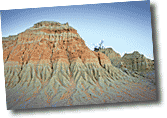 A Story 40 million years in the making
A Story 40 million years in the makingForty million years ago, through the forces of water and geophysical uplifting, the valley that cradles Australia’s greatest river began to take shape. It is a river whose character encompasses environmental beauty, rich in heritage and history, busy townships and major regional centres, with amazing tourism and recreation opportunities, and a continuing bounty of produce – commonly referred to as the “Food Bowl of Australia“.
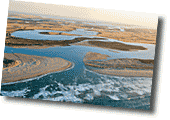 The Murray River is the world’s 16th-longest river at 2,520 kilometres from its source in the Kosciusko National Park. It is fed by several rivers on it’s journey from the Australian Alps. The main feeding rivers are the Darling and Murrumbidgee Rivers. The Darling River (2,740 kilometres) begins in the far inland of Australia (Queensland) and joins the Murray at Wentworth (NSW) then flows to the Southern Ocean through South Australia.
The Murray River is the world’s 16th-longest river at 2,520 kilometres from its source in the Kosciusko National Park. It is fed by several rivers on it’s journey from the Australian Alps. The main feeding rivers are the Darling and Murrumbidgee Rivers. The Darling River (2,740 kilometres) begins in the far inland of Australia (Queensland) and joins the Murray at Wentworth (NSW) then flows to the Southern Ocean through South Australia.
The Murray-Darling drainage area is one of the largest in the world and certainly the largest on the continent, draining most of inland Victoria, New South Wales, and southern Queensland from the western side of the Great Australian Divide. The Murray-Darling Basin drainage system has remained in virtually the same place for millions of years.
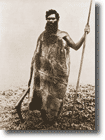 From millennia Aboriginal people have relied on the river’s abundance. The many various groups included Ingalta, Moorundie, Goodwarra, Parrian-kaperre, Tongwillum, and Yoorlooarra. In the Riverland, the Ngarrindjeri people lived on and along the lands around the Murray and the Coorong and are, today, South Australia’s largest Aboriginal community.
From millennia Aboriginal people have relied on the river’s abundance. The many various groups included Ingalta, Moorundie, Goodwarra, Parrian-kaperre, Tongwillum, and Yoorlooarra. In the Riverland, the Ngarrindjeri people lived on and along the lands around the Murray and the Coorong and are, today, South Australia’s largest Aboriginal community.
The Murray River was first discovered by European explorers Hamilton H. Hume and William H. Hovell in 1824. It wasn’t until five years later, however, that Charles Sturt navigated down the Murrumbidgee to encounter the Murray and named it after Sir George Murray, (Soldier and Tory Party Politician 1772-1846) when his exploration party encountered the Darling connection. Sturt had previously explored the Darling River to the north and was able to determine that they were indeed the same river system.
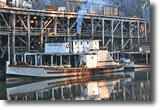 Paddlesteamers were used to carry wool, wheat, and other goods up and down the river system including the Murray, Darling and Murrumbidgee Rivers. Since settlement of the river basin was so late, the invention of the railroad came much sooner in the life of settlement of the river, meaning that the river didn’t ever really find itself a booming source of trade.
Paddlesteamers were used to carry wool, wheat, and other goods up and down the river system including the Murray, Darling and Murrumbidgee Rivers. Since settlement of the river basin was so late, the invention of the railroad came much sooner in the life of settlement of the river, meaning that the river didn’t ever really find itself a booming source of trade.
An irrigation system was introduced in 1887 by Canadian George Chaffey, greatly accelerating the settlement and exploitation of the river’s water supply around Mildura (Victoria) and Renmark (South Australia).
 In 1918, it was finally agreed how to fix this. Victoria, New South Wales, South Australia and the Federal Government formed the Murray River Commission (now Murray-Darling Basin Authority) to control all development and works that were carried out on the river. The Commission coordinated the construction of storages, locks and weirs to reduce the effects of drought and flood. Today, the water flow is still managed by these locks on the river from Yarrawonga in Victoria to Blanchetown in South Australia.
In 1918, it was finally agreed how to fix this. Victoria, New South Wales, South Australia and the Federal Government formed the Murray River Commission (now Murray-Darling Basin Authority) to control all development and works that were carried out on the river. The Commission coordinated the construction of storages, locks and weirs to reduce the effects of drought and flood. Today, the water flow is still managed by these locks on the river from Yarrawonga in Victoria to Blanchetown in South Australia.
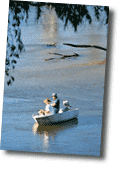 Measures put in place to protect irrigators from droughts include a series of dams and weirs. Unfortunately now only a small percentage of natural flow (36%) now reaches the Murray Mouth via Lake Alexandrina and the Southern Ocean. These water management measures have ensured that constant flow of water is maintained in the river system yet has come at a price for the ecology and environment. Millions of people rely on the Murray as a source of water for domestic and industrial use and it plays a significant part in Australia’s economy.
Measures put in place to protect irrigators from droughts include a series of dams and weirs. Unfortunately now only a small percentage of natural flow (36%) now reaches the Murray Mouth via Lake Alexandrina and the Southern Ocean. These water management measures have ensured that constant flow of water is maintained in the river system yet has come at a price for the ecology and environment. Millions of people rely on the Murray as a source of water for domestic and industrial use and it plays a significant part in Australia’s economy.
A large and range amount of species can be found living in the river basin, including emus, koalas, Western Grey kangaroos, Bearded Dragon lizards, red-rumped parrots, black swans, pelicans, and even dolphins (closer to the ocean). Also plentiful are fish such as the Murray Cod, Bream, Perch, and Redfin.
The plant found most often along the river is the willow, which protects the banks of the river from erosion but also tends to spread out in the soil and take over the surrounding area, choking the growth of other plants.
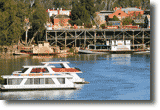 Nowadays the Murray River is under threat from various sources. It contains a high salt content, meaning that it has an impact on all who use it. The intense pressure placed on the Murray from overuse is also a concern which can lead to erosion and overall poor water quality. To experience the diversity of the Murray River is truly amazing. Compared with other rivers in industrial nations, the Murray is in great condition; however that’s no reason to get complacent. It is truly a remarkable living river we all need to protect for the future – requiring a balance that needs constant attention.
Nowadays the Murray River is under threat from various sources. It contains a high salt content, meaning that it has an impact on all who use it. The intense pressure placed on the Murray from overuse is also a concern which can lead to erosion and overall poor water quality. To experience the diversity of the Murray River is truly amazing. Compared with other rivers in industrial nations, the Murray is in great condition; however that’s no reason to get complacent. It is truly a remarkable living river we all need to protect for the future – requiring a balance that needs constant attention.
The Darling River Run joins the Murray River at Wentworth. Experience the Discover Murray River Trail and enjoy a combined great outback river’s experience!